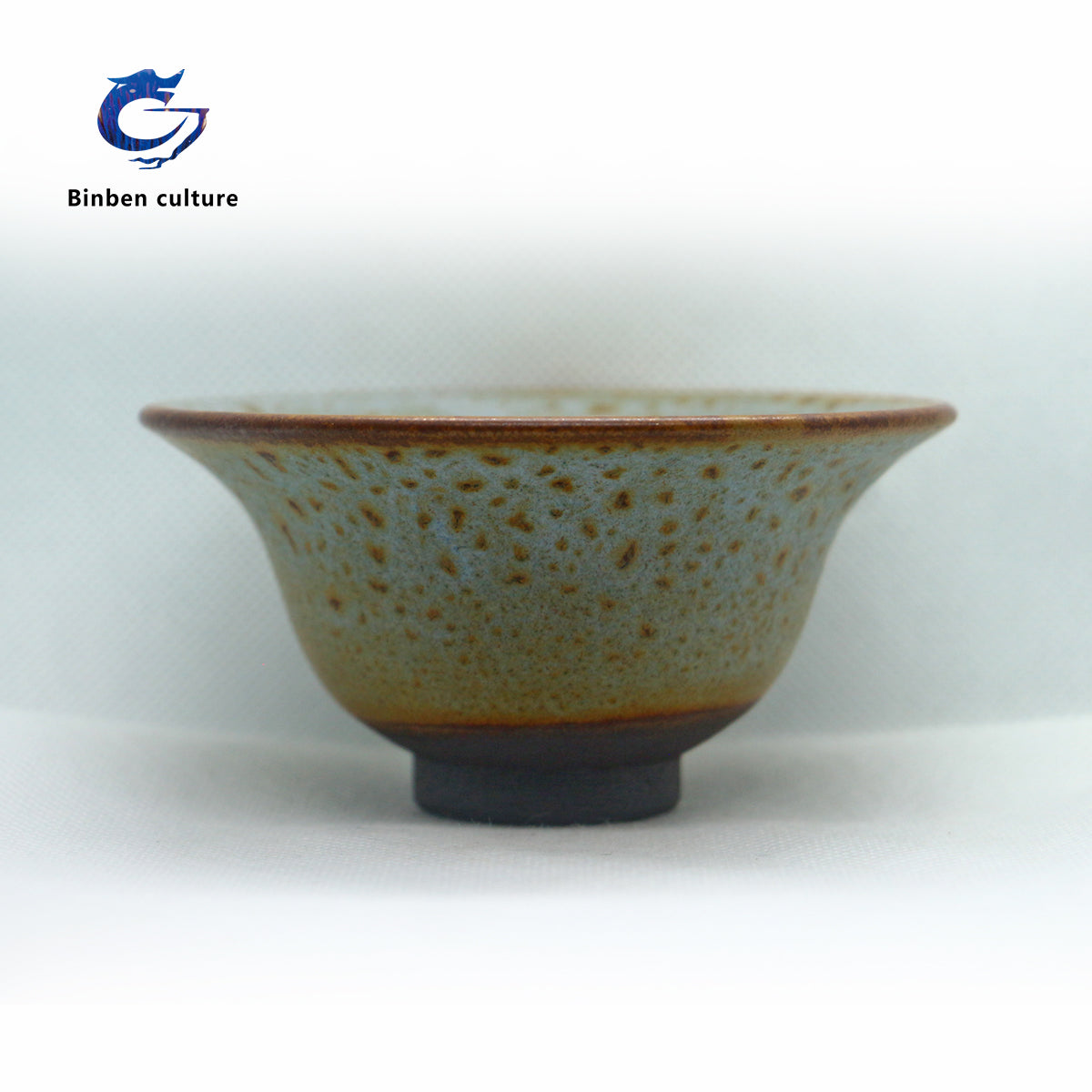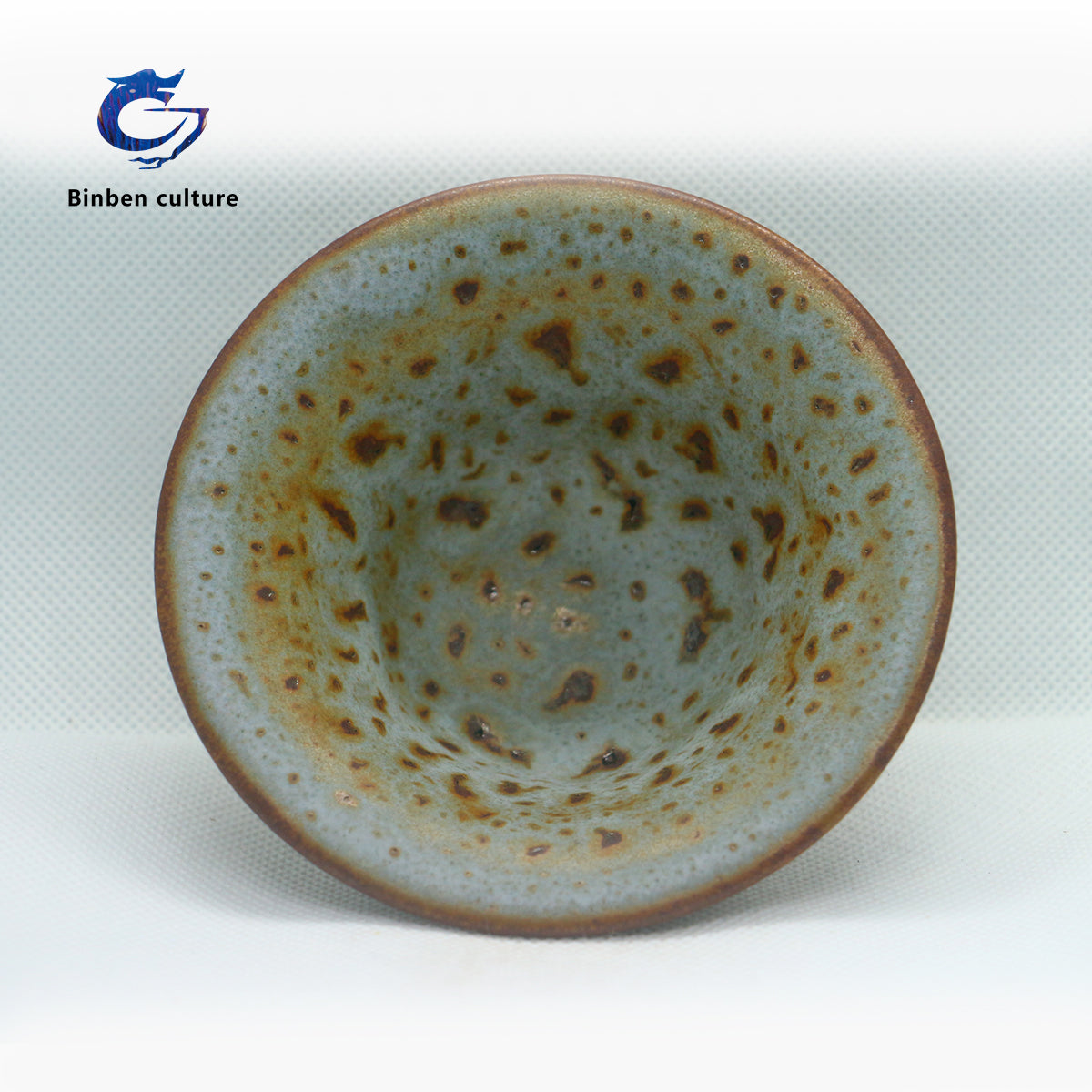



1. Clay selection. Jian Zhan's glaze and clay need to have a high iron content. Other kilns in the Song Dynasty tried to imitate Jian Zhan. Still, they usually could not succeed for the minerals in their geographic location could hardly meet the standards of making a Jian Zhan.
2. Crushing. Place the prepared clay and glaze in a machine for pulverization
3. Washing and sieve. The thickness of the clay or glaze should be moderate. After sieving, the clay needs to be put into the slurry tank, while the glaze needs to be placed in the glaze pool.
4. Chen Fu, which is a ceramic terminology, refers to placing the clay in a room away from sunlight and air, keeping a certain temperature and humidity, and storing it for a while.
5. Knead the clay. This process is aimed to further remove the air and impurities in the clay, make the mud dense, uniform humidity, and facilitate forming, meanwhile, it also prevents the clay from drying and cracking during post-production.
6. Shaping, is usually divided into hand shaping and machine shaping.
7. Modification. The traditional shape of Jian Zhan is mainly a shallow circle foot, and the base part and the “inner ring ” of the foot need to be modified by a knife.
8. Kiln the unglazed Jian Zhan. This process can increase the mechanical strength of the clay, and also remove a part of the cracked and fragile Jian Zhan in advance.
9. Blend glaze. The glaze formula of the ancient method is to use natural iron ore glaze and plant ash. These two simple substances can compose a beautiful glaze, which looks incredible, but the craft of making Jian Zhan is to use the simplest materials to create the most mysterious crystals.
10. Glazed. One of the big features of Jian Zhan's crafting is the half-glazed. Ancient people would specially design a glaze line to facilitate the control of the glaze range. Glazing also needs very skillful technique, ensure the glaze is moderate. If thin, the room for the growth of the crystal is too small to produce delicate works; if too thick, the glaze may easily stick to the bottom.
11. Put into the kiln. There is usually a need to place a layer of alumina powder on the bottom to avoid sticking.
12. Kiln and fire the Jian Zhan. The kiln is the most important process of making Jian Zhan. If the time, degree, and frequency of reduction are not well mastered, the desired glaze color will not be successfully created. After being put into the kiln, the master must concentrate on controlling the degree of reduction and not leave it for a long time.
13. Finishing kiln. After the kiln, due to various restrictions on the making process, each kiln will inevitably produce defective products, which must be disposed of on-site. Products that pass the quality inspection can be sold.
About BinBen Culture
At Binben Culture, we preserve the centuries-old legacy of Chinese ceramic mastery, blending time-honored techniques with modern design to create exquisite porcelain that elevates everyday life with artistry, quality, and cultural essence.
Featured collection
-
Master Sun Jianxing Wujin Hui Lanzhukou Collection Jianyao Jianzhan Intangible Cultural Heritage Master Firewood Burning Master Cup Teacup
Обычная цена $1,700.00 USDОбычная ценаЦена за единицу за$1,700.00 USDЦена со скидкой $1,700.00 USD -
Xu Guozhu Jianzhan Teacup Master Cup Single Cup Pure Handmade Tianmu Teacup Kung Fu Teacup Set Ceramic Teacup
Обычная цена $289.00 USDОбычная ценаЦена за единицу за$0.00 USDЦена со скидкой $289.00 USD -
Li Guangxi purely handmade building cup, four times and four scenes, three care Maolu tea cup, building kiln tea cup, single master cup
Обычная цена $1,391.49 USDОбычная ценаЦена за единицу за$1,391.49 USDЦена со скидкой $1,391.49 USD -
Intangible Cultural Heritage Master Li Zhengui Glacier Cave Huilan Jianzhan Master Cup Teacup Teacup All Handmade Tianmu Yao Change
Обычная цена $599.00 USDЦена со скидкой $599.00 USDЦена за единицу за








